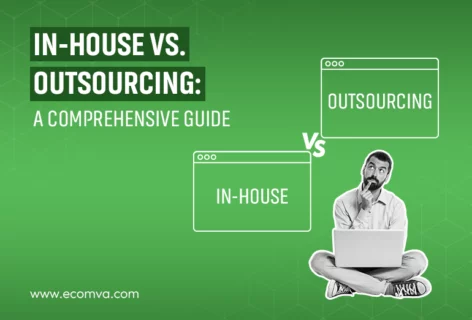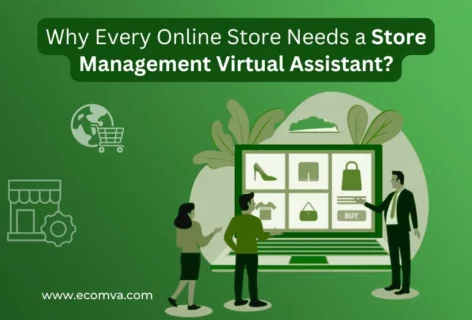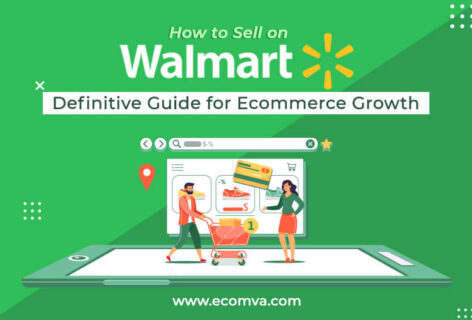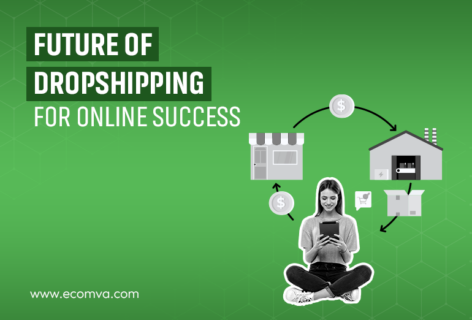Top Shopify Store Management Strategies to Improve Performance
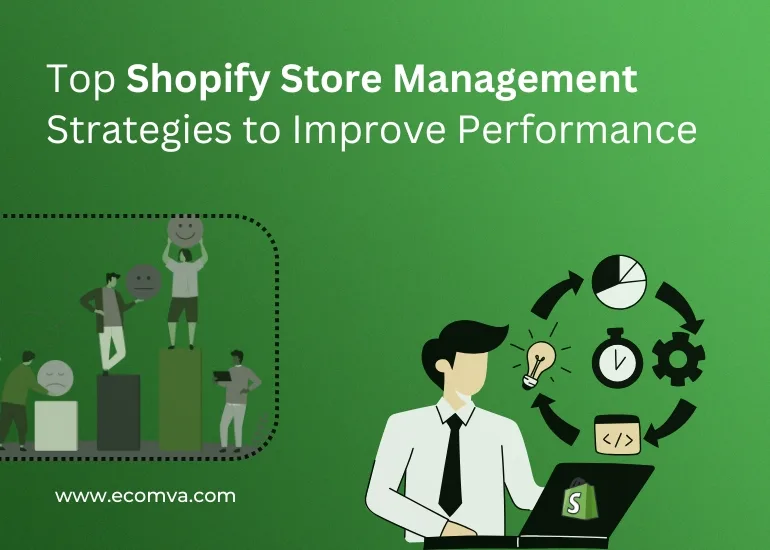
There’s something exciting about running your own Shopify store.
Every order, every new customer, every product launch—it’s like building your own little empire, one happy customer at a time. But while the excitement is real, the challenges are too. Managing everything behind the scenes can quickly get overwhelming if you’re not careful.
That’s why having smart strategies from Shopify store management services is key.
In this blog, we’ll share practical, easy-to-follow tips that will help you run a store that’s not just beautiful but actually profitable too.
Let’s get into it.
8 Shopify Management Strategies You Should Know
1. Fix Up Your Store’s Design and How It Feels to Use
Keep It Clean and Easy to Trust
When people land on your site, they judge it quickly. If your homepage looks messy or outdated, you’ll lose them before they even scroll. Your theme needs to feel professional and match your brand. Shopify store management services will make sure to pick a responsive theme that looks great on both desktop and mobile.
A good design builds trust. It doesn’t need to be flashy—just clear, simple, and sharp.
Sort Out Your Navigation
Your store should be easy to move around. Create clear categories and keep your navigation bar tidy. Don’t make shoppers hunt for products. Use filters and search tools to help people find what they want fast.
And when someone wants to check out? Don’t make it hard. Keep your checkout short and simple. Less friction means more people will actually finish the purchase.
You can take help from Shopify store management services to take care of everything.
Make Sure It Works on Mobile
Most people are shopping on their phones. If your store is hard to use on mobile, you’re going to lose sales. Check twice how your store looks and functions on different screen sizes. Test your menus, buttons, product pages, and checkout on mobile regularly.
2. Speed Matters More Than You Think
Site Speed = Better Sales
Slow websites turn people away. In fact, a second’s delay in page load time can mean fewer conversions. That’s money walking out the door.
If your site is slow, it’s time to fix that.
Tools That Help
Use tools like Google PageSpeed Insights or GTmetrix to test your speed. They’ll tell you what’s dragging your site down.
Most of the time, it’s heavy images. Use tools to compress your pictures without compromising on quality. Caching tools and CDNs (content delivery networks) can also help your pages load quicker.
Don’t Forget Mobile
Site speed on mobile is just as important—maybe even more so. Keep checking both mobile and desktop speeds regularly. You’ll find these tips to optimize Shopify store for sales especially helpful here.
3. Make Product Pages That Convert
Write Product Descriptions That Sell
Every product description should be clear, simple, and focus on what the buyer actually cares about. Answer questions. Mention benefits. Use short sentences. And include important keywords naturally, so your products can be found on search engines.
Use Great Photos and Videos
Shoppers can’t touch the product, so your images do the heavy lifting. Use high-resolution photos from different angles. Add videos showing how the product works or looks in real life. This builds confidence and helps shoppers imagine owning it.
Add Real Reviews
Customer reviews help new buyers feel confident. If your product has zero reviews, it looks untested. Ask past customers to leave honest feedback and show it on your product pages. Photos and user-generated content also help a lot.
Think About Pricing and Offers
Bundling related products, offering discounts, or showing low-stock alerts can push people to act faster. Don’t overdo it, but make sure you’re giving shoppers a reason to buy now—not later.
4. Get a Handle on Inventory and Orders
Keep Track of Your Stock
Overselling is a big problem. Use smart tools to track your inventory and avoid disappointing customers. Set up alerts so you know when you’re low on stock.
Many store owners use Shopify store management tools for this because they can’t afford to mess it up. A professional Shopify store manager will help you stay on top of everything without dropping the ball.
Make Fulfillment Simple
Make sure your order fulfillment is fast and accurate. Use apps or third-party logistics (3PL) companies to automate it. Offer different shipping options, too—standard, express, and even local pickup if it makes sense for your business.
It’s one of the key Shopify inventory management tips you’ll want to implement early.
5. Get Free Traffic with Smart SEO
Start with On-Page SEO
Make sure your product titles and descriptions are using the keywords people actually search for. Add alt text to images. Keep URLs clean and descriptive.
If this sounds like too much, a Shopify management services provider like EcomVA can handle it for you. They know how to set up everything properly so your pages get picked up by search engines.
Build Links the Right Way
Reach out to business websites in your niche. Get them to mention or link to your store. This builds trust with search engines and brings in more traffic over time. You can also publish helpful blog posts or guides on your own site. That helps people and improves your rankings.
This is one of the most overlooked Shopify SEO optimization strategies.
6. Use Smart Marketing to Drive More Sales
Email Is Still Powerful
Email works well when it’s done right. Set up abandoned cart emails so you don’t lose potential buyers. Send product recommendations according to past purchases or interests. Keep your emails simple and useful.
Ads That Work
Run targeted Facebook and Google Ads. If you’ve got traffic but low conversions, use retargeting ads to bring visitors back. These ads remind shoppers of the items they looked at or left in their cart.
Be Active on Social Media
If your customers are on TikTok or Instagram, you should be too. Share behind-the-scenes content, new product drops, or customer reviews. You don’t have to post daily—just be consistent and real.
If you’re short on time, product store management services Shopify can take over this task and keep your campaigns running smoothly.
7. Take Care of Your Customers
Open Support Channels
Offer different ways for customers to reach out—live chat, email, or even phone. Don’t make people wait days for answers. Fast responses build loyalty and trust.
You can even use chatbots to handle common questions when you’re not around.
Keep Them Coming Back
Create a loyalty program, or give a discount to customers who refer a friend. When you handle complaints well and fix issues quickly, people remember. That may turn a one-time buyer into a loyal customer.
It’s part of offering complete Shopify product store management services that go beyond just tech fixes.
8. Keep Watching Your Numbers
Use Your Reports
Shopify gives you a lot of data. Use it. Look at how many people visit your store, what pages they visit, how long they stay, and where they drop off.
Focus on metrics such as conversion rate, bounce rate, average order value, and return customer rate. These numbers tell you what’s working and what’s not.
This is where good Shopify management strategies for beginners can make a major difference.
Try New Things (and Test Them)
Don’t assume your current setup is perfect. Run tests on different product descriptions, images, or even your checkout page. Small changes can lead to more sales. Just test one thing at a time and see what the data tells you.
This kind of insight is core to Shopify product store management services that focus on results.
Let’s Turn Browsers Into Paying Customers!
Running a successful Shopify store takes more than just uploading products. It’s about creating a smooth, trustworthy, and easy shopping experience from start to finish. From fixing your design to speeding up your site, managing your inventory to running smart marketing—everything matters.
If it all feels overwhelming, that’s okay. You don’t have to do it all alone. EcomVA offers reliable Shopify management services that take the pressure off your shoulders. Their Shopify account management services can handle everything from product listings to fulfillment and marketing—so you can grow your business without the stress.
Need help right away? Hire a Shopify Virtual Assistant from EcomVA today and take your store to the next level.
FAQs
1. How often should I update my Shopify store content?
At least once a month. Regular updates keep your store fresh and help with SEO.
2. Can I manage my Shopify store without technical skills?
Yes, basic tasks are user-friendly. For advanced stuff, a virtual assistant or service can help.
3. What’s the best way to deal with customer complaints?
Some of the latest furniture SEO trends include:Respond fast, stay polite, and fix the issue quickly. It builds trust.
Do I need paid apps to run a successful store?
Not always. Many free tools work well, but paid apps can save time and boost performance with advanced features.

